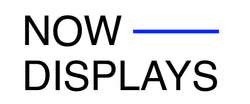Improving the customer experience of your store should be your number one priority. If you want this to happen, you might have to experiment with different layouts. You can promote your most popular products with your store’s layout, while also increasing the amount of time that visitors spend browsing your inventory.
What is Store Layout Planning?
When it comes to running a successful retail store, creating a positive and engaging shopping experience for your customers should be your top priority. Therefore, an essential aspect of achieving this goal is through effective store layout planning. Moreover, store layout planning involves strategically arranging the different sections, aisles, and product displays in your store.
4 Types of Store Layouts

Grid Layout
The grid layout is one of the most common and straightforward store layouts. So, what are the 4 main types of store layouts? Well, it involves setting up aisles in a grid-like pattern, creating a structured and organized shopping environment. This layout is particularly popular in grocery stores and convenience stores. Thus, it allows for easy navigation and quick access to different product categories.
Loop Layout
Also known as the racetrack layout, it guides customers in a continuous loop around the store, isn’t it helpful? The loop design encourages shoppers to explore the entire space, increasing the chances of them coming across items they might not have initially planned to purchase. The loop structure is also frequent in larger retail businesses, department stores, and fashion boutiques.
Free Flow Layout
The free-flow layout breaks away from the traditional grid pattern, offering a more open and flexible shopping environment. Customers can freely stroll across the store, browsing curated displays and particular product areas, because there are no fixed aisles. The free-flow structure encourages visual merchandising innovation, allowing you to design attractive product presentations and storytelling displays.
Boutique Layout
The boutique layout is tailored to small retail spaces and aims to create an intimate and exclusive shopping experience. Therefore, this layout is common in fashion boutiques, jewelry stores, and specialty shops. The product arrangement is more like an artistic exhibition, inviting customers to take their time investigating the merchandise.
How to Plan a Store’s Layout?
- Understand Your Target Audience: Before diving into the layout planning process, it's crucial to understand your target audience and their shopping preferences. Conduct market research and analyze your customer demographics to gain insights into what attracts them, what they value, and what shopping experience they seek.
- Prioritize Popular Products: Identify your best-selling and most popular products, and strategically place them in high-traffic areas. Use eye-catching displays, promotional signs, or interactive kiosks to draw attention to these items. Additionally, you can increase the likelihood of customers noticing and purchasing them.
- Create a Logical Flow: Regardless of the type of layout you choose, ensure that there is a logical flow to the store. Customers should be able to move smoothly from one section to another without feeling lost or confused. Hence, you can place complementary products near each other to encourage cross-selling.
- Consider Impulse Buying: Impulse buying is a powerful driver of sales. Position small, low-priced items or enticing displays near the checkout counter to encourage last-minute purchases. Furthermore, this technique can significantly increase your average transaction value.
Tips for Store Layout Planning
- Focus on customer experience
- Provide adequate lighting
- Play music that’s appropriate for your business

